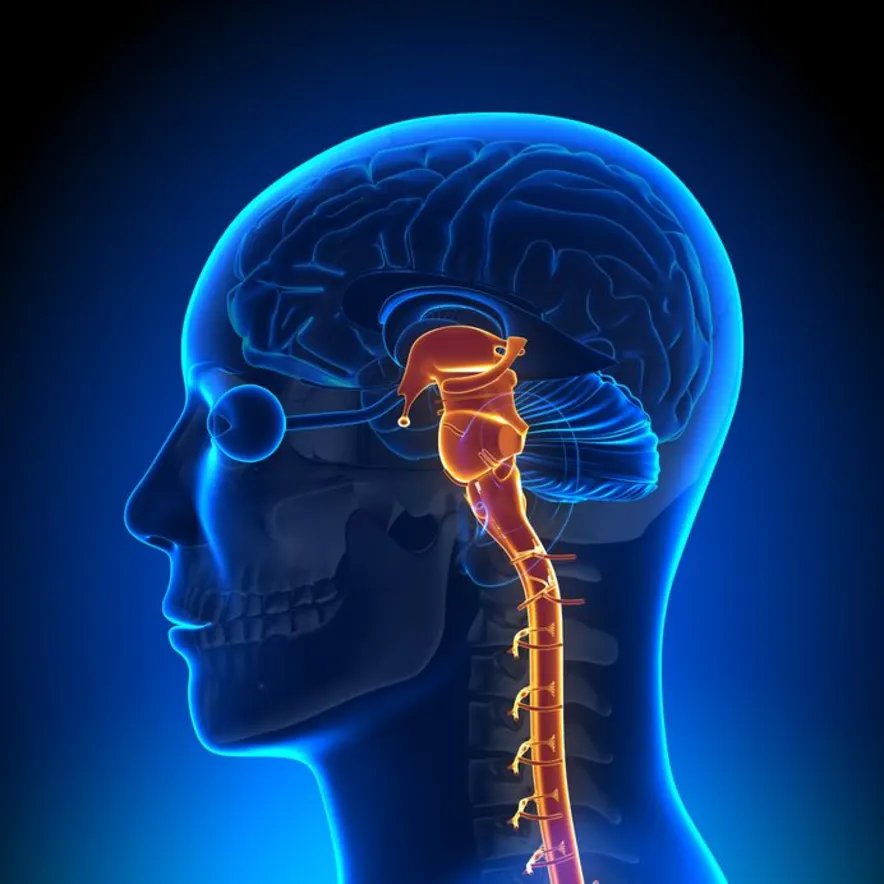A spinal tumour is a growth that develops within spinal canal or within the bones of spine. Tumours that affect the bones of the spine (vertebrae) are known as vertebral tumours while the ones that develop within the spinal cord itself are called spinal cord tumours.
A spinal tumour is a growth that develops within spinal canal or within the bones of spine. Tumours that affect the bones of the spine (vertebrae) are known as vertebral tumours while the ones that develop within the spinal cord itself are called spinal cord tumours.
Growth of tumour in the spinal column usually causes a severe back pain. This is either due to expansion or weakening of the bone, which in turn results in spinal fractures, compression of the nerves, or spinal instability. However, tumours that originate in the spine, called as primary tumours, are slow growing/benign and are quite rare. These commonly occur in younger adults. Also, most of these spinal tumours spread from another area of the body, therefore, cancer patients with any complaint of spine pain or neurological problems require an immediate evaluation.


Some of the common symptoms associated with a spinal tumour may be:
* Pain in the neck/back area
* Neurological problems such as weakness/numbness of the arms or legs or a change in bowel or bladder habits
* Spine pain that is usually worse in the morning
* Pain that persists despite rest. It may get worse at night than during the day
* Back pain along with other symptoms such as loss of appetite, gradual weight loss, vomiting, or fever, chills or nausea, etc.
Types of Spinal Tumours
The three common types of spinal tumours causing back pain are: vertebral column tumours, intradural-extramedullary tumours, and intramedullary tumours.
Primary Tumours: These tumours occur in the vertebral column, and grow either from the bone or disc elements of the spine. Osteogenic sarcoma (osteosarcoma) is the most common malignant bone tumour. Most primary spinal tumours are quite rare and these grow slowly.
Metastatic Tumours: Most often, spinal tumours metastasize (spread) from cancer in another area of the body. These are severely painful and gets worse at night. In women specifically, these spinal tumours usually spread from cancer that originates in the breast or lung. While in men, spinal tumours commonly spread from cancer that originates in the prostate or lung.
Intradural-Extramedullary Tumours
Intradural-Extramedullary (inside the dura) tumours grow within the spinal canal (under the membrane that covers the spinal cord) but outside of the nerves. Usually these tumours are benign and slow growing. However, they can cause symptoms of pain and weakness.
Most of these spinal tumours are:
* Meningiomas that occur in the membranes surrounding the spinal cord and are usually benign but may be malignant. These tumours are more common in middle age and elderly women.
* Nerve sheath tumours (schwannomas and neurofibromas) arise from the nerve roots that come off the spinal cord. Again, this type of tumour is usually benign and slow growing, and it may take years before any neurological problems occurs.
Intramedullary Tumours
These begin in the cells within the spinal cord itself, such as astrocytomas or ependymomas. These tumours occur most often in the cervical spine (neck) and tend to be benign, but the surgery to remove these tumours may be difficult.
Diagnosis
Many a times spinal tumours may be overlooked because their symptoms resemble those of other conditions. However, for confirmation, one or more of the following diagnostic tests are performed to locate the tumour:
Spinal magnetic resonance imaging (MRI): MRI accurately shows the spinal cord and nerves in the spine area and yields better pictures of bone tumours than a computerised tomography (CT) scans do.
Computerised tomography (CT): This test uses a narrow beam of radiation to produce detailed images of the spine which sometimes may be combined with an injected contrast dye to make abnormal changes in the spinal canal or spinal cord easily visible
Biopsy: The only way to determine the precise nature of a spinal or vertebral tumour is to examine it through biopsy test. It helps to determine the treatment best suited for the patient.
Treatment
Ideally, the goal of spinal tumour treatment is to eliminate the tumour completely, but this goal may be complicated by the risk of permanent damage to the spinal cord and surrounding nerves.
Treatment options for most spinal tumours include:
Monitoring: Some spinal tumours may be discovered before they even cause any symptoms. However, if the tumours are small and noncancerous and aren’t growing, “watchful waiting” is all that’s needed.
Surgery: This is often the treatment of choice for tumours that can be removed with an acceptable risk of spinal cord or nerve injury damage. Newer techniques and instruments allow neurosurgeons to reach tumours through minimum invasions and perform surgeries with utmost precision. Unfortunately, despite the latest technological advances in surgery, not all tumours can be removed completely. Therefore, in such cases, either radiation therapy or chemotherapy or combination treatment of both are to be followed.
Radiation therapy: This may be used to eliminate the remnants of tumours that remain after surgery, or to treat those tumours where surgery is too risky. It may also be the first line therapy for metastatic tumours. Radiation may also be used to relieve pain or when surgery poses too great a risk.
Stereotactic radiosurgery (SRS): This method of radiation is capable of delivering a high dose of precisely targeted radiation. There are different types of technology used in radiosurgery to stereotactically deliver radiation to treat spinal tumours, such as a Cyber-Knife machine.
SRS has certain limits though when it comes to size and specific type of the tumours that can be treated.
Chemotherapy: The procedure uses medications to destroy cancer cells or stop them from further growing. However, side effects of chemotherapy may include fatigue, nausea, vomiting, increased risk of infection and hair loss, etc.
Other drugs: Because surgery and radiation therapy as well as tumours themselves can cause inflammation inside the spinal cord, sometimes corticosteroids are prescribed so as to reduce the swelling, either after surgery or during radiation treatment.
Copyright © 2020. All Rights Reserved.
Designed and Developed by Easy Solution 360